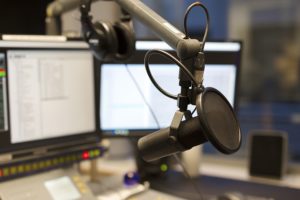
Two of the focus areas of the Indiana Chamber’s EchoChamber podcast are education and technology. Both take center stage in the early months of 2018.
Two conversations – with Marian University President Dan Elsener and WGU Indiana Chancellor Allison Barber – are available now. Three more to come feature Trine University President Earl Brooks (January 30), Salesforce Marketing Cloud CEO Bob Stutz (date to be scheduled) and South Bend’s Rich Carlton, president and COO of Data Realty (February 27).
Innovation is one of the themes that carries throughout these discussions. Elsener was greeted with a great deal of skepticism when he announced plans to start a medical school at the private Indianapolis university. Its first graduates came in 2017. That is among a variety of initiatives that has Marian well on the way to doubling in size by 2025.
WGU Indiana brought a new online, competency-based approach when it became the state’s eighth public university in 2010. It offers an avenue for working students (80% are employed full time) to advance their skills and earn bachelor’s or master’s degrees. Trine has expanded its academic and athletic offerings, with significant growth both geographically and in enrollment.
Stutz has touted Indiana’s tech environment since his arrival in 2016. Carlton is passionate about data management and community development. We know you will enjoy their insights and getting to know them a little better.
You can listen to all EchoChamber conversations online. Subscribe at iTunes, GooglePlay or wherever you get your podcasts to be notified about the latest episode. Also, please rate and review us on Apple Podcasts.

 The soon-to-released July/August
The soon-to-released July/August  Tried to get in to see your primary care physician lately? It’s possible you’ve found it harder and harder to get a quick turnaround time on an appointment, unless it was scheduled months in advance.
Tried to get in to see your primary care physician lately? It’s possible you’ve found it harder and harder to get a quick turnaround time on an appointment, unless it was scheduled months in advance.